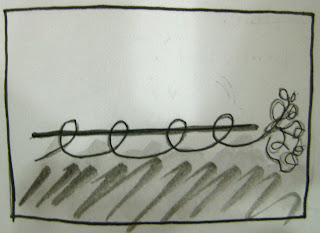Archetype/Prototype/Hybrid:
An archetype is an original piece of work or model that influences other similar work or models. The Tuscan order is an archetype. A prototype is a work or model that is based off of an archetype. A Doric order is a prototype. A hybrid is a composite of different prototypes and archetypes to make a whole. A Composite order is an example of a hybrid. A Tuscan order is the archetype that is the original column from which the Doric order is based off of. The Composite order combines the Ionic, Doric, Tuscan, and Corinthian columns to make a hybrid. The Corinthian order is a prototype to the Ionic order because "The base and shaft of the Corinthian and Ionic columns were similar." (Blakemore, 29) Also, the Temple of Hera I in Paestum is a prototype for the Doric ideal and the Temple of Hera II is similar to Hera I, so that makes it the prototype for the archetype Hera I.

Order:
Order is the arrangement of something in sequence or in succession. "The role of the orders was significant in defining spaces of the Greek interior... they were also instrumental in creating visual interest by the attention drawn to them vertically through decorative detail..." (Blakemore, 28) There is order in the Acropolis because all the columns have an entablature and because the columns are arranged in a certain order. The Doric, Ionic, and Corinthian orders were invented by the Greeks and adapted by the Romans. There is order in hierarchy too because there is a succession of highest to lowest importance or rank. Roth says that "The Romans endeavored to achieve universality and a clearly perceivable order in all of life, and their unique achievement was to give form to this civic order in the urban spaces they shaped- a form framed by clearly ordered ranks of axially disposed and colonnaded buildings." (Roth, 250)
Source:
Source is the original place or thing that something comes from. In Greece and several other places they used to use aqueducts to supply water to the cities. Aqueducts were built up high off the ground. Aqueducts were a good source to channel water from one place to another because to the Greeks, water was very important and significant. Suzanne taught us that it helps if you have a light source to make your drawings look more realistic. Using "natural light as a prominent design element" (Blakemore, 28) will help make our drawings look more three dimensional and realistic.


Hierarchy:
Hierarchy refers to ranking or order in people or things. The higher in order or ranking, the more important it is or they are. In Greece, the Acropolis was built up on a hill for a reason. It’s because the Acropolis has great hierarchy. Inside the Acropolis there is the Parthenon, the Erechtheion, the Propylaia, and the Athena Nike. The Parthenon sits high in the Acropolis because it has higher hierarchy than the others and because it is the most important. There is also hierarchy in stools and who sat in them. Stools/chairs were "used by high magistrates or by the emperor; in representation of these it is revealed that the person seated has a higher status than the person standing beside him." (Blakemore, 62)

Entourage:
In architecture, entourage refers to surrounding features in the environment around and in a building or structure. I have heard other people use the word entourage when describing scale figures in a drawing. This week, we had to put entourage (scale figures) in our thumbnail sketches from the drawings of our building we were assigned. The hardest part about drawing entourage is that you have to draw the people in motion. Landscape can also be considered entourage. Agora, in Athens, has elements in it of natural landscape. After the Akropolis in Greece was burnt down, they decided that there needed to be new temples so "The Akropolis was the ideal spot for these new temples." (Roth, 231) Roth was saying how the Akropolis has a beautiful entourage around the new temples.
This drawing for Suzanne's class shows inside a hallway in the MHRA building with entourage (the students in the hallway).
Summary:
An archetype is the ideal > a prototype gets you to the ideal > a hybrid is the steps to get to the ideal > the hierarchy of the Parthenon has a goal to achieve the ideal > the Parthenon in the Acropolis has order and hierarchy > the Acropolis is the source to many important temples and structures that has entourage in its environment. Details lead to Parts that make up the Whole.


No comments:
Post a Comment